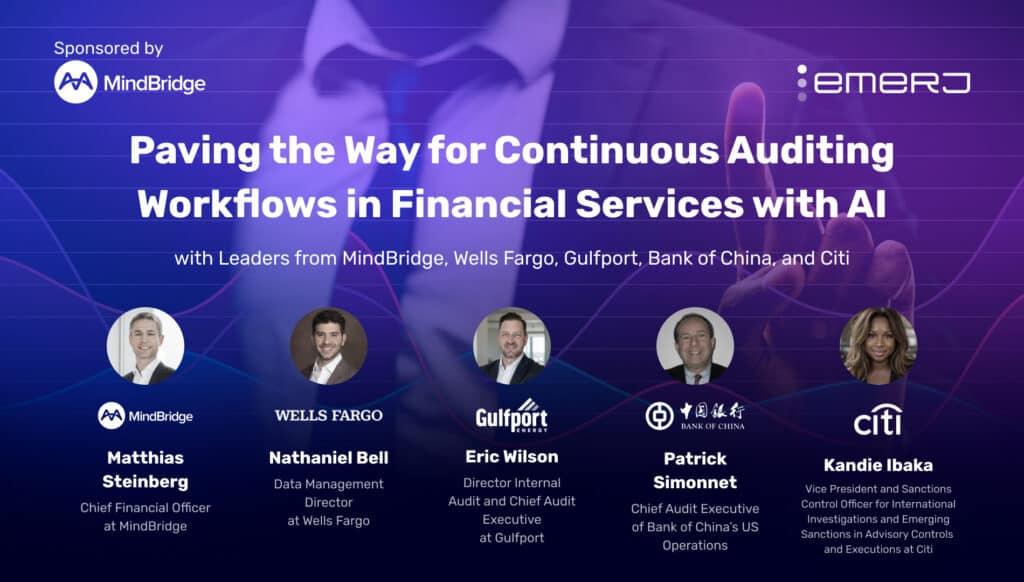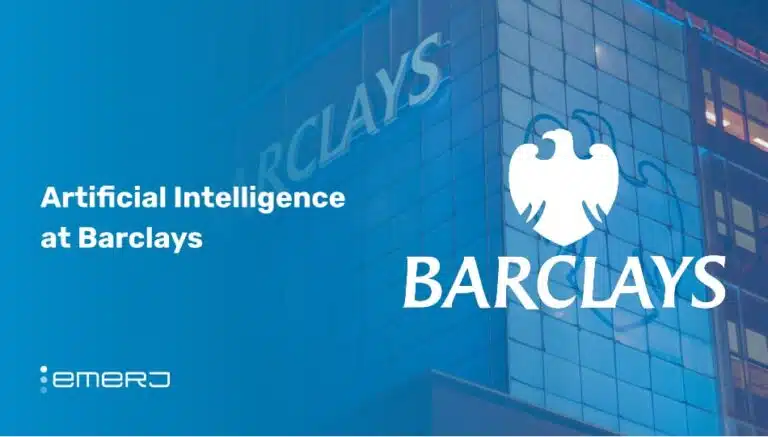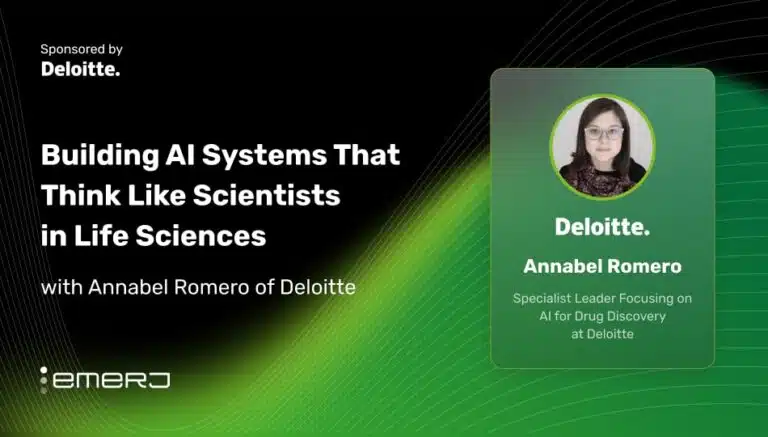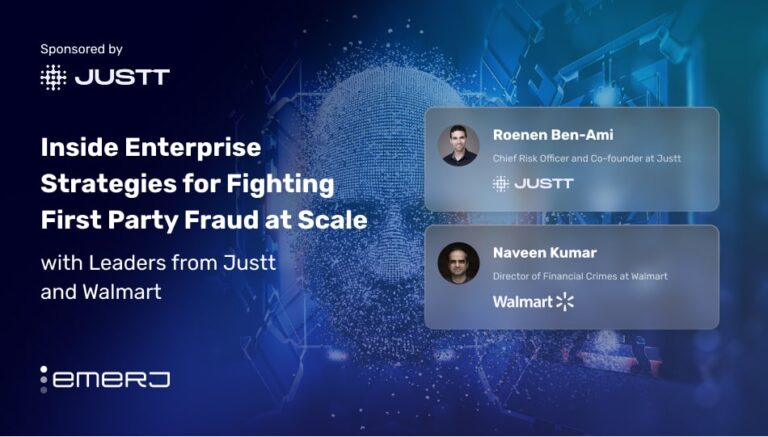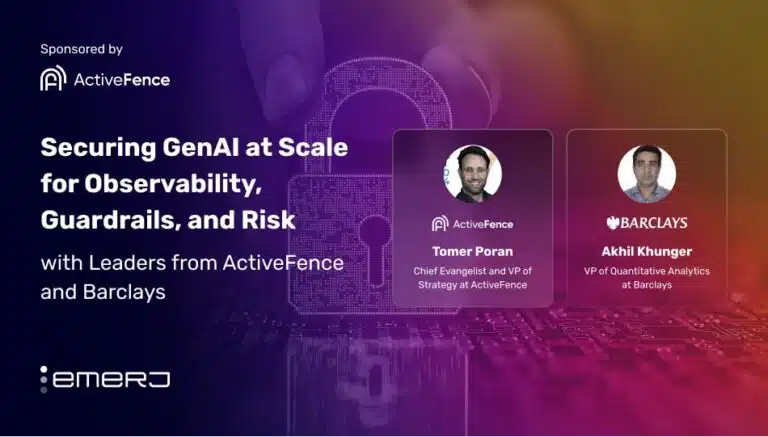This article is sponsored by MindBridge and was written, edited, and published in alignment with our Emerj sponsored content guidelines. Learn more about our thought leadership and content creation services on our Emerj Media Services page.
Traditional audit cycles — often conducted annually or quarterly across many different industries — are increasingly misaligned with the pace and complexity of today’s financial risk environment. Delays in surfacing anomalies limit visibility and expose organizations to compliance failures and financial losses.
Manual audit processes remain a persistent bottleneck for accounting and finance teams, even in high-stakes environments.
The 2005 Illinois Statewide Single Audit Report identified 29 material findings across 16 agencies, with many issues traced back to manual methods and siloed systems used to compile the state’s Comprehensive Annual Financial Report. The report highlighted the absence of a unified electronic reporting system as a core contributor to delayed timelines and elevated risk of error.
These challenges extend beyond the public sector. A survey by Financial Executives International found that firms using manual, decentralized workflows spent nearly 50% more on Sarbanes–Oxley compliance than those with centralized automation — highlighting the high cost of inefficiency.
Continuous auditing, increasingly driven by AI, provides a viable solution. Unlike traditional periodic reviews, continuous audit systems enable real-time anomaly detection, data validation, and automated control testing. These workflows reduce manual workloads, enhance accuracy, and allow finance leaders to move from reactive oversight to proactive assurance.
In a special podcast series sponsored by MindBridge, Emerj Editorial Director Matthew DeMello recently sat down with several experts in financial services and automation on the ‘AI in Business’ podcast to discuss the challenges surrounding manual processes and the path toward continuous auditing by AI capabilities across financial workflows.
These guests included Matthias Steinberg, Chief Financial Officer at MindBridge; Patrick Simmonet, Managing Director and Chief Audit Executive at Bank of China; Eric Wilson, Director of Internal Audit and Chief Audit Executive at Gulfport Energy; Nathaniel Bell, Corporate Functions Business Data Leader at Wells Fargo; and Kandie Ibaka, Vice President and Sanctions Control Officer for International Investigations and Emerging Sanctions in Advisory Controls and Executions at Citi.
Each guest spoke in depth about how internal audit and accounting teams must adapt to inevitable digital transformation from their individual perspectives. Taken together, their perspectives illustrated the urgent need for internal audit teams to embrace AI, not just as a tool for efficiency but as a catalyst for evolving audit roles, enhancing risk visibility, and driving more strategic, forward-looking insights.
This article examines the following key insights from these conversations:
- Transforming financial oversight with real-time monitoring: Introducing AI-powered dashboards can help finance teams detect anomalies daily, reduce manual errors, and facilitate continuous, automated audits.
- Building hybrid audit talent with AI skills: Training data scientists as auditors to future-proof internal audit by combining AI skills with audit judgment for smarter, technology-driven risk assessments.
- Learning AI early to lead audit transformation: Embracing AI and clearly explaining it through simple, relatable language to enable auditors to identify risks early and shape business decisions
- Reducing subjectivity in audits by automating manual processes: Targeting highly manual, error-prone processes with AI to reduce subjectivity, improve accuracy, and free up auditors to focus on systemic risk.
- Transforming compliance through AI and cross-functional skills: Leveraging AI to turn real-time regulatory data into actionable risk decisions while building cross-team fluency and adaptability to craft clear, regulator-ready insights.
Transforming Financial Oversight with Real-Time Monitoring
Episode: Short Term and Long Term ROI for AI in Finance – with Matthias Steinberg of MindBridge
Guest: Matthais Steinberg, Chief Financial Officer, MindBridge
Expertise: Artificial Intelligence, Finance
Brief Recognition: Matthais has decades of experience in organizational fundraising, handling mergers and acquisitions, IPO readiness, cost reduction, and insolvency management for a wide range of businesses across financial services and technology. He has led finance and HR teams in tech companies ranging from $20 million to $1 billion in revenue. He holds a Master’s Degree from INSEAD and a Master of Engineering Degree from RWTH Aachen University.
In his podcast appearance, Matthias lays out a vision of the future where finance teams routinely use real-time monitoring tools like “monitoring cockpit” to track the integrity and risk across all financial flows (inflows, outflows, and ledgers).
Just as cybersecurity teams today rely on real-time dashboards to detect threats, he believes finance will soon adopt similar tools for daily oversight, making this level of visibility essential and standard in the next 5–10 years.
He explains that by “cockpit,” he means a real-time finance dashboard that monitors the health and risks across all financial flows, such as vendor payments, payroll, and revenue. These dashboards should flag issues such as duplicate invoices, payments to former employees, or vendor billing without delivery.
He illustrates this with a personal story: Years ago, as CFO of a large web hosting company, Matthias’s team spent nearly a year of manual work checking whether 6 million customers were being billed correctly across complex systems. In the future, he believes AI, especially anomaly detection, will automate such tasks, making this kind of oversight fast, scalable, and accurate.
In laying out his idea of a post-manual, continuous vision of audit workflows, he emphasizes to the audience that AI in finance falls into two main categories:
- Everyday AI: Improving efficiency by automating routine tasks.
- Game-changing AI: Enabling entirely new capabilities that weren’t possible before.
While automation will make finance departments leaner and more cost-effective, he’s more excited about the transformational side.
“This is a direction the audit industry is broadly aligned on. I’m confident that having a more detailed, real-time view of the integrity of financial data—examining every transaction daily—will fundamentally transform how audits are conducted. Within the next decade, I believe the traditional annual audit will evolve into a continuous process. Monthly, highly automated reviews will become standard practice, allowing year-end audits to focus exclusively on the most complex transactions that still require human judgment.”
— Matthais Steinberg, Chief Financial Officer, MindBridge
Building Hybrid Audit Talent with AI Skills
Episode: Navigating the Future of Financial Risk Management – with Patrick Simonnet of Bank of China
Guest: Patrick Simmonet, Managing Director and Chief Audit Executive, Bank of China
Expertise: Risk Management, Internal Audit, Business Development
Brief Recognition: Patrick brings over three decades of experience leading and managing global and regional teams. He has previously held roles at Credit Suisse, JPMorgan Chase, the World Bank Group, and Goldman Sachs, where he spent 14 years in various capacities. Originally from Paris, Patrick held several control and business roles at Banque de France and the French Futures and Options Exchange and Clearing House (MATIF).
In his podcast appearance, Patrick explains that internal audit teams at the Bank of China now use AI technologies like generative AI (GenAI) and machine learning to perform continuous, quarterly risk assessments. These assessments help auditors anticipate what-if scenarios that could negatively impact the institution, such as geopolitical risks, cyber threats, or third-party vulnerabilities (e.g., when sensitive data is handled by contractors or cloud providers overseas).
He emphasizes that while AI is a powerful tool for prediction and analysis, it can’t replace human judgment. Experienced auditors, especially those who’ve navigated past crises, bring essential context and intuition that data scientists alone may lack.
Thanks to AI adoption over the last few years in financial services, Patrick also notes a shift in the auditor’s role: one from an accountant, on to transforming into a risk manager, and now toward engineer – or someone who must understand and apply AI tools effectively in financial workflows.
Despite the automation already in place, Patrick insists human oversight remains crucial to counter hallucinations and unrealistic outputs and ensure sound decision-making.
He notes that hiring auditors with risk management skills remains relatively straightforward. However, to keep up with the growing importance of data and AI in auditing, his team had to build a specialized Advanced Analytics for Audit (AAA) team — made up of data scientists and recent data science graduates from top U.S. universities:
“The ideal future for audit is one where data scientists are trained to become auditors — combining deep technical expertise with a strong foundation in audit principles. By bridging these disciplines, we can build audit teams capable of leveraging AI and advanced analytics while maintaining the rigor and integrity the function demands. That dual competency should be our goal for the audit of the future.”
– Patrick Simmonet, Managing Director and Chief Audit Executive at Bank of China
Learning AI Early to Lead Audit Transformation
Episode: Audit’s Evolving Role in Business Intelligence for Heavy Industry – with Eric Wilson of Gulfport
Guest: Eric Wilson, Director of Internal Audit and Chief Audit Executive, Gulfport Energy
Expertise: Internal Audit, Team Leadership, Project Management
Brief Recognition: With over two decades of experience in audit, Eric is a seasoned leader who has held senior positions at Chesapeake Energy, CBRE, Guitar Central, and California State University. He received his Bachelor of Science from Loyola Marymount University and holds the Certified Internal Auditor, Certified Information Systems Auditor, and Lean Six Sigma Black Belt designations.
Eric emphasizes that auditors and business leaders should not wait to start learning about AI. It’s not something leaders can afford to learn after the market and new technologies have outpaced them. Once AI becomes deeply integrated into business processes, identifying and fixing risks will be much harder.
In particular, Eric emphasizes that auditors need to understand how these systems work before they’re too ingrained to control:
“One of my guiding principles in audit comes from Parkinson’s Law of Triviality — the idea that people often focus on simple issues because they’re easier to understand while avoiding more complex, high-impact challenges.
I see this frequently in audit environments, where significant time is spent on lower-risk items simply because they’re easier to assess. To counter this, I consistently encourage auditors to go deeper — especially regarding emerging technologies — and find clear, effective ways to communicate those complexities to management. That’s where the real value lies.”
– Eric Wilson, Director of Internal Audit and Chief Audit Executive at Gulfport Energy
To help organizations adapt, Eric urges auditors to simplify AI communication. Rather than overwhelming business leaders with technical jargon, auditors should use analogies, relatable stories, and simple explanations to help others understand AI. If they don’t, many leaders will tune out and fall behind.
He suggests that internal auditors must proactively engage with AI to be considered strategic advisors. He urges audit leaders to start using these tools, understand how they work, and become internal change agents.
By doing this, auditors can propose relevant business use cases and establish themselves as knowledgeable partners. This proactive approach encourages business teams to consult the audit process early when implementing new technologies rather than bringing them in too late — when issues may already be baked into the system and hard to fix.
Reducing Subjectivity in Audits by Automating Manual Processes
Episode: Where AI Can Reduce Risk and Cost in Audit Processes – with Nathaniel Bell of Wells Fargo
Guest: Nathaniel Bell, Corporate Functions Business Data Leader, Wells Fargo
Expertise: Data Management, AI Risk Mitigation, Infrastructure Optimization, Data Governance Strategies
Brief Recognition: Nathaniel Bell is the Corporate Functions Business Data Leader at Wells Fargo, where he specializes in optimizing data strategies to support AI initiatives and address organizational challenges. Focusing on bridging infrastructure investments and innovative AI use cases, Nate provides valuable insights into managing risks and aligning AI technologies with business objectives.
For his episode in the MindBridge-sponsored series, Nathaniel highlights the ongoing tension in auditing between objectivity and subjectivity. Auditors aim to be objective, but as Nathaniel notes in his podcast appearance, they often work with human-led processes that are inherently subjective, especially when auditors and process owners have different perceptions about what constitutes a risk.
He tells the podcast audience that digital transformation, including AI, can help codify business processes, making them more structured and standardized. The shift will enable auditors to assess risks more objectively and data-driven. For example, if something breaks in a system, it becomes immediately transparent — less open to interpretation:
“I tend to focus on highly manual processes because they represent both risk and opportunity. These processes are not only time-consuming, but they also introduce a significant margin for human error. Research shows that in complex spreadsheets, we typically catch only about 70% of errors — leaving a substantial gap in accuracy and oversight. That’s why I always ask: where can we apply AI to reduce that margin of error and drive more reliable, efficient outcomes?”
– Nathaniel Bell, Corporate Functions Business Data Leader at Wells Fargo
Nathaniel also reflects on a common pitfall in audit workflows: getting fixated on a single issue within a process and treating it as a major risk without a broader context. He stresses the importance of stepping back to assess systemic risk rather than overemphasizing isolated errors.
Ultimately, Nathaniel believes auditors should and will spend less time on routine tasks and more time on storytelling as AI-driven automation becomes more commonplace in financial institutions. He sees the future of auditing as a discipline that leverages human talent to connect findings with broader business impact, helping stakeholders understand not just what went wrong but why it matters.
Transforming Compliance Through AI and Cross-Functional Skills
Episode: Reducing Sanctions Compliance Pressure with Smarter Tools – with Kandie Ibaka of Citi
Guest: Kandie Ibaka, Vice President and Sanctions Control Officer for International Investigations and Emerging Sanctions in Advisory Controls and Executions, Citi
Expertise: Regulatory Compliance, Internal Audit, Financial Risk Management
Brief Recognition: Kandie is an experienced Banking Professional with a strong background in Compliance Risk Management. Before joining Citibank, she was with JPMorgan for almost seven years, where she was responsible for compliance management, risk management, and financial analysis. She holds a Master’s Degree from the University of Mississippi in Homeland Security, with a focus in Human Trafficking.
Kandie emphasizes that the relationship between financial institutions and regulators has evolved from reactive compliance to proactive accountability. Regulators now expect real-time insights, clear documentation, and evidence that systems are designed to catch and act on issues before they escalate.
These expected enterprise capabilities from regulators include explaining the logic behind alerts, decisions, and team workflows – making governance a built-in feature, not an afterthought. Kandie notes that, to accomplish such functionality, her team leverages GenAI tools for real-time visibility and traceability to meet this pressure.
She stresses that the critical value lies in understanding not just the “what” but the “so what” of a particular metric—similar to Nathaniel Bell’s point about future auditing workflows that do not just point at what happened but why it matters.
To Kandie’s point, differentiating the “what” from the “so what” is not just understanding data points but understanding the connection between data and a company’s risk posture. Rather than receiving alerts or regulatory updates (like from OFAC) and filing them away, her team is using advanced AI tools to interpret their implications and take meaningful actions.
The translation process therein, she clarifies, involves turning alerts and even evolving regulatory guidance into actual decisions that answer questions like the following:
- Should we tighten internal controls?
- Do our teams need retraining based on this risk?
- Should we pause a specific activity?
- How do we advise leadership on potential risk trade-offs?
Kandie further explains that as regulations become faster-moving and more interpretive, compliance teams must evolve from simply executing tasks to owning insights:
“We still need a solid grounding in sanctions compliance and investigative rigor, but what’s becoming just as essential is cross-functional fluency — the ability to communicate effectively with legal, tech, and operations teams in a shared language.
It’s not just about reporting data; it’s about shaping it into a narrative that leadership and regulators can understand and act on. That kind of analytical storytelling is where audit and advisory are headed. And as the tools evolve, so must we. Confidence with technology and a mindset of constant curiosity and adaptability are now part of the core skill set.”
– Kandie Ibaka, Vice President and Sanctions Control Officer for International Investigations and Emerging Sanctions in Advisory Controls and Executions at Citi


